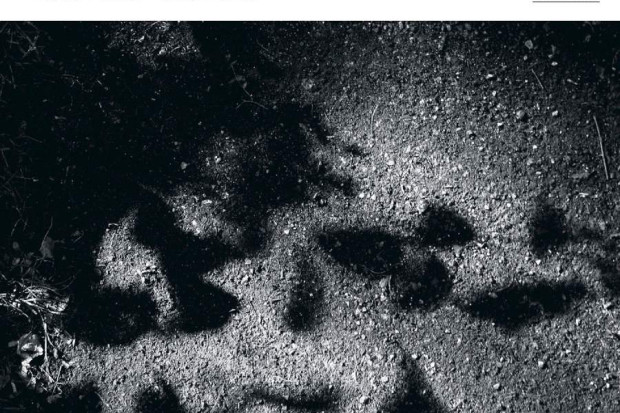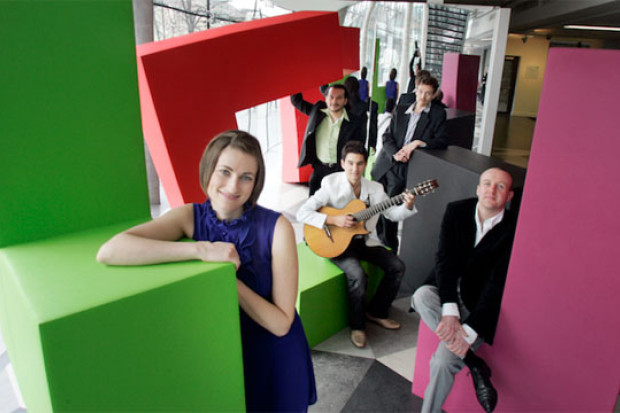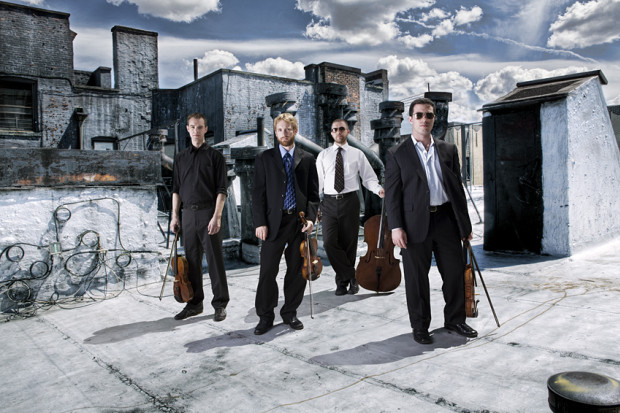When form was blown open
Imagine, this Mozart year, a favourite piece of his, with the last few bars missing – replaced by silence. You will have, in one sense, an open piece instead of a closed piece. But it is clear that the very idea is unutterably crude, rather like knocking the end wall off your house to let some air in. This does not equate to what the high modernists of the 1950s called ‘open form’ – so what, then, is ‘open form’?
The problem of form is not merely a problem of the organisation of the overall shape, but of the organisation of every single thing in the piece. With tonal music there exists a single organising principle that affects the internal stress of every constituent, just as gravity dictates the design of a house and the table within it. As tonality’s influence was eroded slowly, objects within the ‘house’ gradually attained the freedom to adopt more varied and imaginative shapes. The achievement of Schoenberg, Berg and Webern was to find a key to transcending gravity (which, as far as they were concerned, still existed, but now only latently – Schoenberg likened his system to an aeroplane that frees you to go in a new direction, but it does not rewrite Newtonian physics). But it was really the next major wave of composers, the Darmstadt generation of Boulez, Stockhausen, and so on, who after much further work on those early achievements pointed out that now in fact you could have no end wall in your house, which in any case was no longer a house! To them, ‘open form’ was an absolute necessity, the completion of the logic of the situation; and indeed they lost no time in criticising Schoenberg for not fully grasping this.
Perhaps a better metaphor, since music moves through time, is the journey. The composer was no longer fenced on to roads, and no longer had a defined time-schedule or destination. A slogan for this situation was found in ancient graffiti in a Spanish monastery: ‘Wanderer, there is no path, you must walk’. This reminds us that our roads are just old paths beaten by earlier generations, and that we must leave them to go somewhere truly undiscovered. It was Luigi Nono who actually made that quote known to the musical world; in the original it is ‘Caminantes, no hay caminos. Hay que caminar.’ He used the phrase in different versions for several titles of his later works.
And, since they seem to help, why not a third metaphor? There was a clear parallel to tonality in the use of perspective in visual art. Perspective too governs the orientation of everything in a (visual) composition. Painters therefore went about working out how to escape it, soon realising that it could be avoided, and that the residual tension from its absence could be avoided too – if the desire to represent the familiar was stemmed. In this respect, by the 1950s, a major strand of the avant-garde was the abstract expressionist group in New York, with composers John Cage and especially Morton Feldman taking strength from the boldness of the freedoms enjoyed in the work of De Koonig and Pollock. Expanding formal possibilities and revolutionising structural principles seemed to happen earlier in visual art, and these composers noticed this.
For Cage, and the scene around him, it was time to really lose any trace of the ‘glue’ that held notes together, and they quickly moved off in directions that European composers would largely reject for a long time. Form (and here the term covers every organising principle) was not only open, it was blown wide open.
Feldman and Nono: Unmissable
It happens that the Feldman and Nono form an interesting and unexpected pairing which is the focus for the forthcoming Sligo New Music Festival (24th-26th March). They would at first seem to share little: Nono, an Italian, was a composer who espoused communist principles in many of his works (which required texts and vocalists in many pieces); the American Feldman was silent on that front, and mostly kept away from text. The Atlantic divides them, and who knows what they thought of one another, if anything. But they shared similar time-lines (Nono: 1924-1990, Feldman: 1926-1987) and prominence (both extremely highly regarded, especially by composers these days, yet slightly occluded by the brightness of the figures around them).
Both exemplified the practice and spirit of open form by designing structures that are original to themselves at every level. Both rejected any suggestion that there was a single new ‘method’ for composing (this is generally untrue in any case for the fifties’ avant-garde; it is largely a glib, inaccurate truism), but they each evolved their own language with separate demands – especially in the case of Feldman who wrote very long pieces in which things only appear to move, as it were.
Yet both believed passionately that anyone could approach their music, that it was not elitist, though it may require a patient, thoughtful approach. The impression sometimes coming from the avant-garde of the day – that the elegance of the inaudible composing system behind a new piece was its measure of quality – was strongly criticised by both as ridiculous. Feldman put it pithily: ‘if you think you might have secret information listening to me, you’re lost.’ And of Nono, Lachenmann has said: ‘for a fact, the structure of his works is unbelievably simple.’ Indeed, it actually is: frequently what disorients new listeners to Nono is that the simple event unfolds very slowly over long stretches of time, while things on the momentary scale seem unpredictable. The overall effect of his music is powerfully expressive without recourse to cliché.
The Sligo festival will be a unique chance to become immersed in the world of these two figures; significant and large works from both are to be played: Nono’s La lontananza nostalgica utopica futura, for example, which exemplifies the caminante open-form idea, as it features a violin soloist wandering through irregularly spaced out music stands. The tape part is manipulated live: an array of faders is to be interpreted by a musician reacting to the violinist’s sounds. In the festival the violinist will be Ioana Petcu-Colan, with composer Jürgen Simpson at the sound desk.
Feldman’s late work, Piano and String Quartet, which is seventy minutes, is one of his ‘pattern’ pieces. What this means is that short patches (like on a quilt) of musical material are distributed in time (with gaps), returning over and over with finely shaded harmonic and durational changes. This use of ‘patterns’ allows the music to play with memory, both disorienting memory and letting you hear how the disorientation is taking place at the same time. Feldman is challenging because he avoids so much that we hear in other music: here there is no progress (only change) in the pitch domain, no manipulation of the listener’s emotions, no rhythm, only duration (as he put it), a narrow dynamic range, and so on; what is left attains a heightened relevance. Like in the work of Beckett, who he revered, specifics have almost been eliminated so that the listener ends up in a psychic cavern that stills, then resonates and amplifies the mind of the beholder.
There are several other extremely interesting works by Nono and Feldman in the forthcoming festival, and also works by Scelsi, Ferneyhough, Kurtág, Siobhán Cleary and Jürgen Simpson. There will be other Irish composers featured in an electro-acoustic concert to be curated by Simpson. Ian Wilson is in charge of the overall programming of the festival, while the performers are Nicole Tibbels, Sarah Nicolls, Nancy Ruffer, Richard O’Donnell and the Callino String Quartet. Another unusual aspect of the festival is the commissioning of both text and music for a large new work from poet Sinead Morrissey and Simpson. This festival will be unmissable, and Dublin readers should take heart from the improved accessibility of Sligo by road and rail. Be sure to go.
Rara avis
Watch out also for a new CD from the Dublin Guitar Quartet, Deleted Pieces, on a label called Greyslate Records (the code is GREYCD014). This CD captures the whole aesthetic drive of what this group are about. The centrepiece is Kevin Volans’ string quartet White Man Sleeps, arranged by Brian Bolger who is a composer and member of the quartet. The CD includes powerfully realised performances of music from Gorecki, Brouwer and Bolger himself, and it finishes off with a piece from rock band Redneck Manifesto, also arranged by Bolger. All the pieces share a luxurious quality of sound that is partly due to the acoustic of the recording venue, partly to the use of guitars with extra bass and treble range, and mostly due to the colour that these players coax out of the instruments. This is the sort of contemporary music product that could end up in a classical music chart without having draped sexy girls on the cover and without featuring pretentious or tendentious music – a rara avis.
Published on 1 March 2006
John McLachlan is a composer and member of Aosdána. www.johnmclachlan.org












